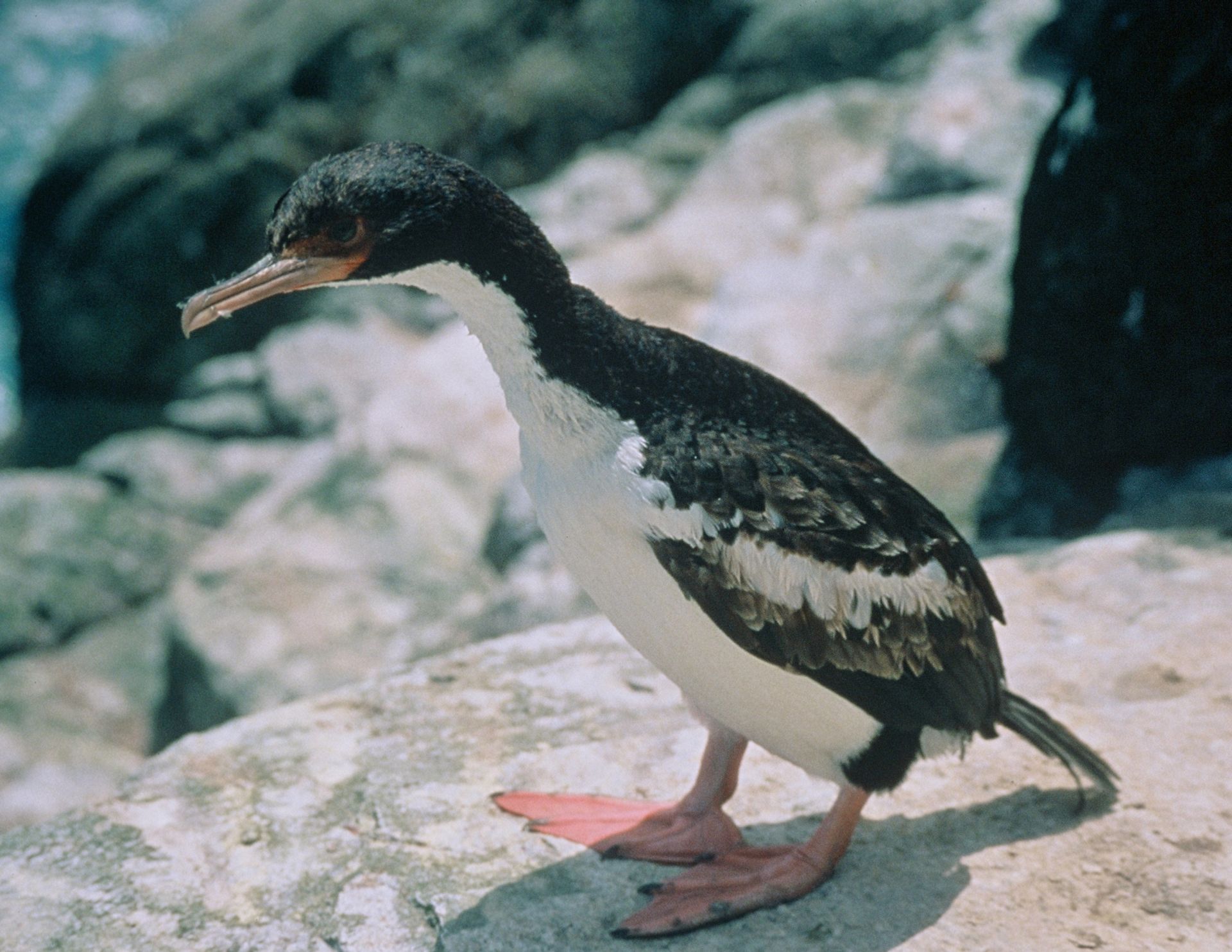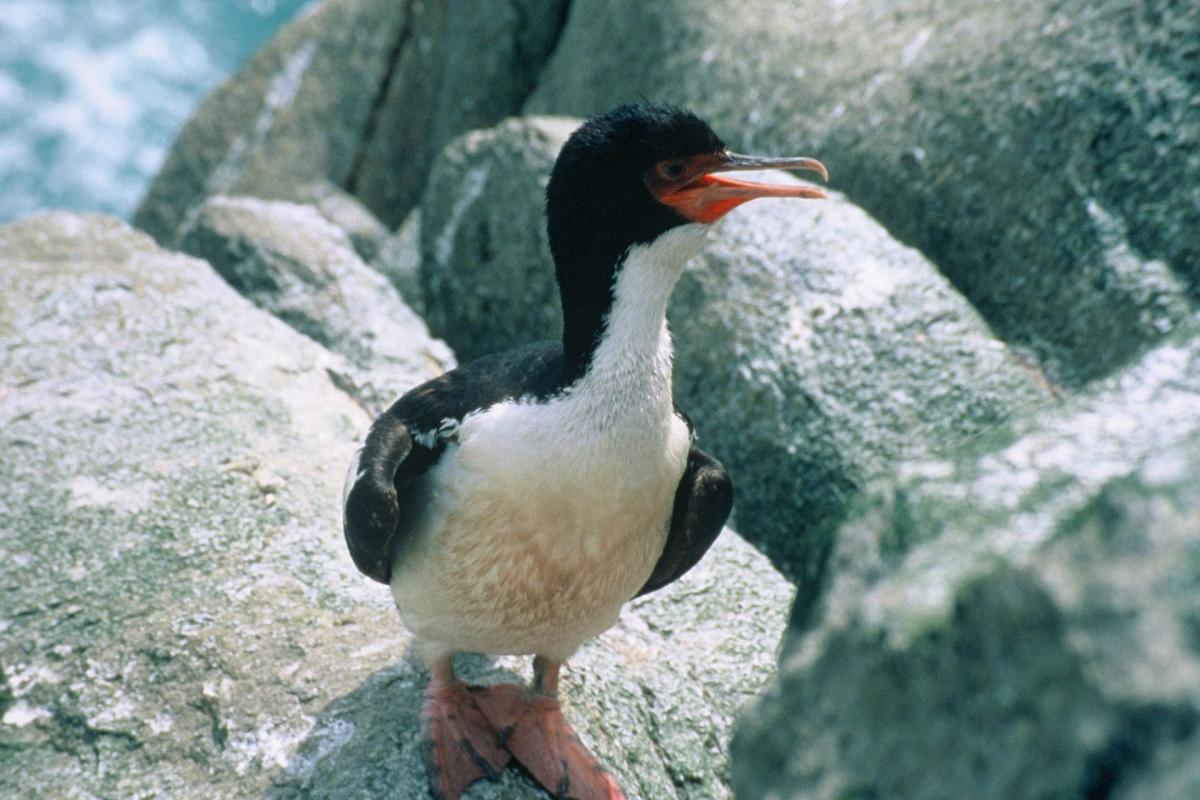Bounty Shag
The Bountyscharbe (Phalacrocorax ranfurlyi, English name: Bounty Shag Iceland ) is an endemic to the subantarctic islands Bounty species of bird in the family of Cormorants ( Phalacrocoracidae ). Because some scientists this family split into two separate subfamilies - the actual cormorants ( Phalacrocoracine ) on the one hand and the American plaice ( Leucocarboninae ) on the other - the Bountyscharbe is also sometimes referred to as Leucocarbo ranfurlyi. The type itself is monotypic, ie there are no further sub- species.
The IUCN classifies the Bountyscharbe as endangered ( vulnerable ) because the global population is very low and the distribution area small. Extraordinary events in the area of distribution such as an oil spill can have very far-reaching effects on the population. The global population is estimated by the IUCN to 620 mature individuals.
Appearance
The Bountyscharbe reaches a height of up to 71 centimeters. The wing length is 27.2 to 30.0 inches. Bountyscharben weigh 2.3 to 2.9 kilograms. Males tend to be slightly larger and heavier than females.
The body top and the face is black, the throat and the front neck and body underside is white. The feet and legs are flesh-colored. When the young birds the plumage is brownish and not different from the plumage of other Scharbenjungvögel. It consists in the distribution area, however, no mix, as the Bountyscharbe is the only cormorant occurring here.
Bountyscharben are agile on land, they run in sincere posture and gently lift the feet striking on. During the flight the head is stretched out, it is lower than the body axis. There are no mix up with other cormorant species because no species of this family occur on the Bountinsel. Similarities with the Aucklandscharbe that occurs only on the island group of the Auckland Islands.
Area of distribution and habitat
The natural habitat of Bountyscharbe are rocks and cliffs. The endemic species is in their inventory as a vulnerable (but not in immediate danger ), which is positive to note that their habitat is now under strict protection ( UNESCO World Heritage Site) is. The number of breeding pairs is according to the latest estimate well 500
Reproduction
The reproductive biology of Bountyscharbe is not yet been studied very well. The Bountyscharbe is a colony breeders. It nests along rock bands and rock cliffs that are beyond the reach of sea lions, penguins and albatrosses. The nests are about a meter apart. Bountyscharben are territorial, both parents birds defend the immediate Nistumgebung.
The laying period falls within the period of October and November. The clutch consists of two to three eggs. The first hatched chicks were previously observed on November 17. On the development of nestlings is not known.








%252520Bounty%252520Islands%252520NZ%252520Nov%2525202010-L.jpg)

